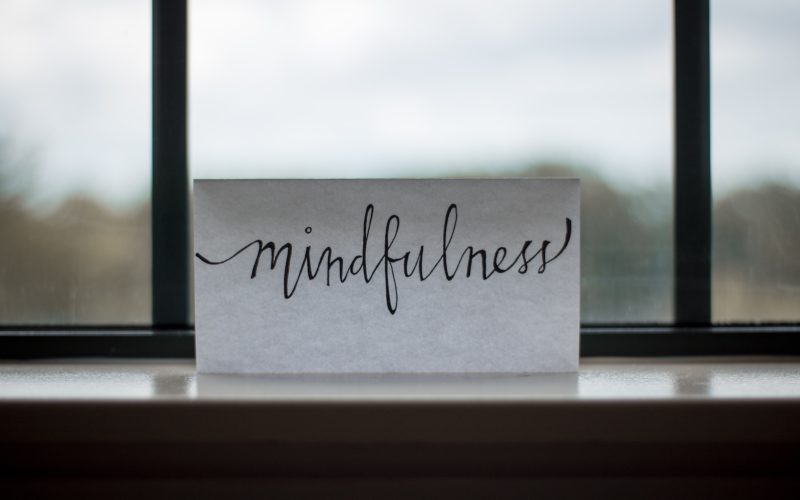Are you tired of feeling overwhelmed and anxious? Do you find yourself constantly stressed out by the demands of everyday life? If so, it’s time to take a step back and discover the power of mindfulness meditation. This ancient practice has been used for centuries to help individuals achieve inner peace and reduce feelings of anxiety and stress. In this blog post, we’ll explore how mindfulness meditation works, its benefits, and provide tips on how to get started with your own practice. Get ready to embark on a journey towards greater calmness and tranquility!
What is Mindfulness Meditation?
Mindfulness meditation is a form of mindfulness that is widely practiced in the western world. Mindfulness meditation involves sitting quietly and focusing on your breath. As you focus on your breath, you will notice thoughts and feelings coming and going. You should not try to suppress or ignore these thoughts and feelings, but rather let them come and go as they please. The goal of mindfulness meditation is to achieve a state of mind where you are aware of your thoughts and feelings without judgment. This can be a difficult task for many people, but with practice it is possible to achieve this state of mind.
There are many benefits to mindfulness meditation, including reducing anxiety and stress levels. When you are able to focus on your breath and let go of judgmental thoughts, you create space in your mind for more positive thoughts and feelings. This can lead to decreased levels of anxiety and stress, as well as increased peace and happiness. If you are interested in trying mindfulness meditation, there are many resources available online or through local organizations.
The Benefits of Mindfulness Meditation
Mindfulness meditation has been shown to be an effective way to reduce stress and anxiety. In one study, participants who practiced mindfulness meditation for eight weeks had significantly lower levels of anxiety and stress than those who didn’t meditate (1).
Other research has shown that mindfulness meditation can help people with anxiety disorders. In one study, people with generalized anxiety disorder who took an eight-week mindfulness meditation course had reduced levels of anxiety and depression (2).
Mindfulness meditation has also been shown to improve sleep quality. In one study, people who practiced mindfulness meditation for four weeks slept better and felt more rested than those who didn’t meditate (3).
There are many other benefits of mindfulness meditation, such as reducing negative emotions, improving attention and focus, and increasing self-awareness (4).
How to Get Started with Mindfulness Meditation
If you’re like most people, you probably live in a constant state of stress and anxiety. You may not even realize it, but your body is always on high alert, ready to fight or flee at a moment’s notice. This can take a toll on your physical and mental health, leaving you feeling tired, irritable, and unable to focus.
Mindfulness meditation is a simple yet powerful practice that can help you find inner peace and calm in the midst of chaos. It involves focusing your attention on the present moment, without judgment or analysis. This allows you to become more aware of your thoughts and feelings, and let go of the stress and anxiety that comes from constantly being in “fight or flight” mode.
Getting started with mindfulness meditation is easy – all you need is a quiet place to sit or lie down, and a few minutes of time. Here’s a basic mindfulness meditation practice that you can try:
1. Find a comfortable position and close your eyes.
2. Focus your attention on your breath. Breathe in slowly and deeply through your nose, filling up your lungs. Then exhale slowly through your mouth.
3. As you breathe, pay attention to the sensation of the air moving in and out of your body. Notice how your chest and stomach rise and fall with each breath.
4. If your mind wanders, gently bring it back to focus on your breath.
5. Continue for 5
Tips for Practicing Mindfulness Meditation
Mindfulness meditation is a form of mindfulness that can be practiced anywhere at any time. Here are some tips for practicing mindfulness meditation:
1. Find a comfortable place to sit or lie down. You can also practice mindfulness while walking, but it is best to start with a seated position.
2. Close your eyes and take a few deep breaths.
3. Focus your attention on your breath. As you inhale, notice the rise of your chest and the expansion of your belly. As you exhale, notice the fall of your chest and the contraction of your belly.
4. If your mind wanders, gently bring your attention back to your breath without judging yourself. Mindfulness is not about clearing your mind, but rather letting thoughts come and go without getting caught up in them.
5. Continue focusing on your breath for 5-10 minutes or as long as you like.
Troubleshooting Mindfulness Meditation
If you’re having trouble mindfulness meditation, there are a few things you can do to troubleshoot. First, make sure that you’re in a comfortable position. If you’re sitting, make sure your spine is straight and your legs are uncrossed. If you’re lying down, make sure you’re not slumped over and that your legs are slightly apart.
Second, close your eyes and focus on your breath. Breathe in slowly and deeply through your nose, filling up your lungs. Then breathe out slowly through your mouth. Focus on the sensation of the air moving in and out of your body.
Third, if your mind starts to wander, gently bring it back to focus on your breath. Don’t try to force it; simply observe the thoughts as they come and go. Eventually, they will dissipate and you’ll be able to focus on the present moment.
If you find yourself struggling with mindfulness meditation, don’t worry – it takes practice! Keep at it and you’ll eventually find that inner peace that you’re looking for.
Conclusion
Mindfulness meditation is an excellent tool for helping individuals to discover inner peace and alleviate anxiety and stress. It can be used as a way of increasing self-awareness, calming the nervous system, improving concentration and focus, reducing physical pain levels, cultivating positive emotions and thoughts as well as strengthening relationships with others. By incorporating mindfulness into our lives on a regular basis we can pave the way towards greater mental wellbeing by learning how to maintain balance in our lives even during times of difficulty or duress.











